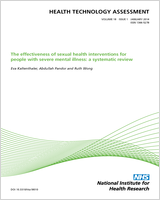NCBI Bookshelf. A service of the National Library of Medicine, National Institutes of Health.
Duarte A, Mebrahtu T, Goncalves PS, et al. Adalimumab, etanercept and ustekinumab for treating plaque psoriasis in children and young people: systematic review and economic evaluation. Southampton (UK): NIHR Journals Library; 2017 Nov. (Health Technology Assessment, No. 21.64.)

Adalimumab, etanercept and ustekinumab for treating plaque psoriasis in children and young people: systematic review and economic evaluation.
Show detailsPsoriasis is an inflammatory disease that mostly affects the skin but is also associated with joint disease and other illnesses. It can greatly reduce a person’s quality of life. A range of treatments are used in psoriasis, including the more recent ‘biologic’ drugs. The National Institute for Health and Care Excellence recommends a number of biologic drugs for treating severe psoriasis in adults. The purpose of this study was to assess the gains and harms associated with three biologic drugs that can be used in children – adalimumab (HUMIRA®, AbbVie, Maidenhead, UK), etanercept (Enbrel®, Pfizer, New York, NY, USA) and ustekinumab (STELARA®, Janssen Biotech, Inc., Titusville, NJ, USA) – as well as their cost-effectiveness.
We took all available information from clinical trials. The results showed that adalimumab, etanercept and ustekinumab all improve symptoms of psoriasis in the short term, but the limited evidence in children means that the effects later in life are unclear (e.g. long-term effects on heart disease). The only way to find which treatment was best was to include extra information about the effects of these drugs in adults.
The economic assessment found that the use of biologics in children and young people would be good value for NHS money only if many consequences of biologic treatment in children are assumed to be the same as those in adults.
- Plain English summary - Adalimumab, etanercept and ustekinumab for treating plaq...Plain English summary - Adalimumab, etanercept and ustekinumab for treating plaque psoriasis in children and young people: systematic review and economic evaluation
Your browsing activity is empty.
Activity recording is turned off.
See more...